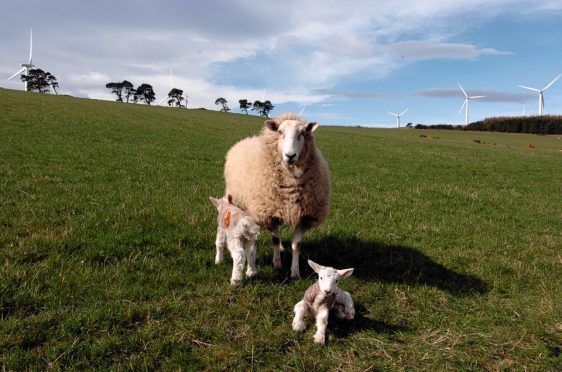Scottish farmers have been warned to be alert for possible cases of Schmallenberg disease as the virus has been confirmed in livestock just south of the border.
The head of SAC’s veterinary services, Brian Hosie, advised farmers to arrange a post-mortem examination for any stillborn or deformed animals to curb any resurgence of the virus.
It was recently detected in lambs on four holdings in the north-east of England – including Northumberland – and cases have also been confirmed in Devon, Dorset, Cornwall, Somerset, County Laois and County Cork, according to the Animal and Plant Health Agency (APHA).
Scotland is believed to be on the outer edge of the range for the virus but Mr Hosie said there was no scope for complacency.
“The outbreaks in 2013 pointed to infection in November and December of the previous year, and it’s perfectly possible that midges could bite stock in sheds in January,” he said.
“Obviously Schmallenberg is not the only cause of abortions A post-mortem can identify whether it has been caused by toxoplasma or border disease in sheep or if it is related to BVD in cattle, fungal toxins or neospora. There are vaccination programmes that can then be followed.”
A post-mortem for a calf costs £59 and for a lamb it is £39.
The virus was first discovered in 2011 and appeared in Scotland in a small number of livestock in Dumfries and Galloway in 2013. That was followed by a second strike in suckler cattle in Aberdeenshire and at the height of the outbreak farmers vaccinated their most valuable pedigree stock.
“It was probably wise because in some cases the deformity of the foetus can cause serious problems at lambing and calving and be a disaster for the future productivity of the cow or ewe,” said Mr Hosie.
There are currently no stocks of vaccine, but vets are keen to ascertain the true levels of the virus as it will help them determine whether there is a need to vaccinate later in the year.
AHDB Dairy’s lead veterinary science expert, Derek Armstrong, said: “It is expected SBV (Schmallenberg virus) will be found in the later lambing season.
“Milder weather conditions earlier in November were a perfect platform for the midge-borne virus to breed and prolong the period of infection.”
